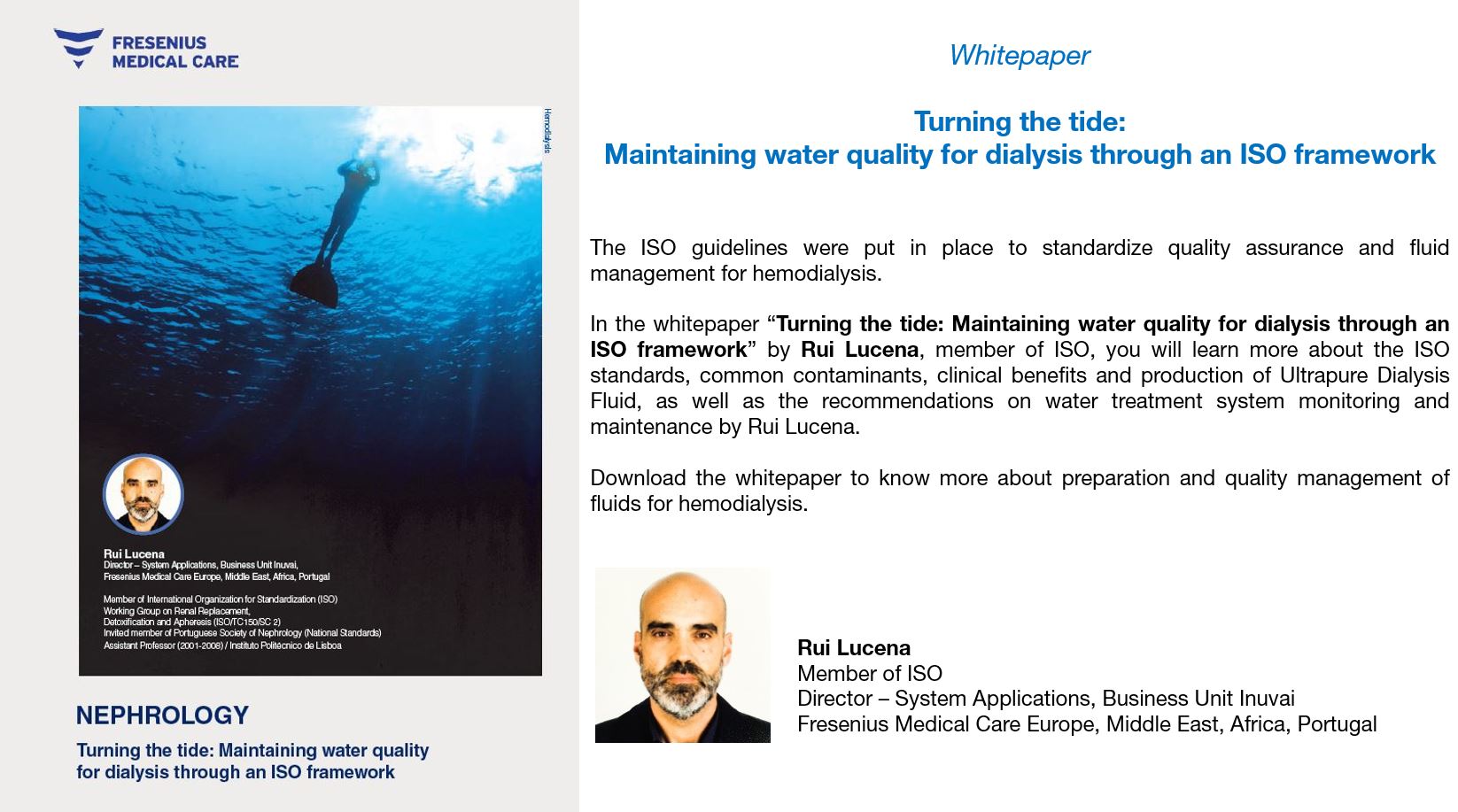Rise Together for Patients Safety
Water is an essential requirement for HD. Most end stage renal disease patients receive hemodialysis three times a week for the rest of their lives. Large volumes of dialysis fluid (as much as 120L) come into contact with the patient’s bloodstream during each treatment, the quality and purity of the dialysis fluid are of major concern in modern-day renal replacement therapies.
Bacterial endotoxins present in contaminated dialysis fluid may elicit undesirable acute reactions and influence the long-term outcome of patients on chronic haemodialysis. Patients are highly vulnerable to contaminants that may be present in that water.1
This means that the quality of water used for dialysis fluid is critical and has led to the use of UPDF, which is defined (by the ISO organization) as containing <0.1 colony-forming unit/ml (CFU/ml) using sensitive microbiological methods and <0.03 endotoxin unit/ml (EU/ml) 2
Watch this video to see why you need UPDF in hemodialysis
" By driving awareness and adoption of the ISO standards, we are helping to enhance the safety of patients, protecting them from the risks associated with impure water and improperly prepared dialysis fluid. We have chosen World Patient Safety Day to highlight the importance of this issue."
~ Harry de Wit, CEO of Fresenius Medical Care Asia Pacific.
The International Organization for Standardization (ISO) has developed a series of standards for the quality of dialysis fluid and concentrates. 3 Notably, Fresenius Medical Care’s complete portfolio of products - from water treatment systems, dialysis concentrates, dialysis machines and filters - are aligned with these standards.
In short, to ensure patient safety and dialysis treatment effectiveness, you need to:
1
Follow the ISO standards for patient safety and save cost
2
Choose the right equipment to provide suitable dialysis water
3
Ensure continues monitoring of equipment and water quality
4
Record all information collected
5
Follow manufacturers recommendation
Ensure staff is trained and continuously receives refresher training

Reference
- Lucena, R., Boccato, C., Vienken, J., & Evans, D. (2015). Water and Dialysis Fluids: A Quality Management Guide. https://doi.org/10.13140/RG.2.1.3595.8485
- Canaud, B. and Lertdumrongluk, P. Ultrapure Dialysis Fluid: A New Standard for Contemporary Hemodialysis. Nephro-Urology Monthly. 2012;4(3),519-523.
- Hoenich, N., et al. Water for Haemodialysis and Related Therapies: Recent Standards and Emerging Issues. Blood Purification. 2010;29:81-85.
